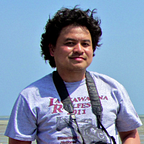CATE BLANCHETT AND THE OLDEST FILIPINO BUILDING IN SAN FRANCISCO
Woody Allen ended his film Blue Jasmine with the camera closing in on Cate Blanchett in South Park, San Francisco. The background was a little out of focus but I recognized the exact spot right away when I read the sign behind Cate Blanchett. That’s Gran Oriente Filipino, I whispered to Jack. On January 3, 2010, we went to this place to take a photo of this historic building. I doubt if Woody Allen knew the story behind the place but if he did it was a smart location choice.
Blue Jasmine isn’t Allen’s strongest work but people will be talking about Cate Blanchett’s shattering performance as a fallen socialite from New York who moves to San Francisco (a few blocks from where we live) and loses her bearings in the Mission and Marina districts, Marin headlands, Dogpatch, Sausalito, Chinatown, and Union Square. Her epic unraveling is so harrowing it made it difficult to laugh at Allen’s familiar humor, her descent to madness at times almost unbearable to watch.
She ends up in South Park, a historic district in the city, which from the mid-19th century to the present, has served as a barometer of the local economic climate: from an elite suburb to a working class neighborhood, to slums revitalized by artists and the dot com generation until its collapse. One of the buildings that survived South Park’s gentrification is Gran Oriente Filipino. In 1921, a group of Filipino immigrants employed as merchant marines purchased a three story house in South Park and named it in honor of their masonic fraternity in the Philippines. The house served as a twenty-four room hotel and a meeting place for the Filipino community that worked in San Francisco and the nearby Central Valley, including my great grandfathers Gabriel Orpilla and Pedro Bascos. Filipinos remain the largest minority group in the South of Market area with neighboring streets named after Filipino heroes like Bonifacio and Lapu-Lapu. The Filipino owners have refused to sell the building even when its value rose to millions of dollars. The hotel, home to Filipino elderly, is now oddly wedged in an area that is home to photographers, artists, and hipsters.
My awareness of this history made that final frame of Cate Blanchett in front of Gran Oriente Filipino personally striking and powerful: her frayed character unmoored by financial scams in the east coast, and shored in front of this historic building, one of the first properties owned by minorities in the west coast. The irony was not lost on me. It reminded me of Jeanette Macdonald’s finale song in the 1936 film about the 1906 earthquake that ruined the city. “San Francisco/ Open your golden gate/ You let no stranger wait outside your door”. Except that in Blue Jasmine, the seismic occurrence and devastation all took place in the face of Cate Blanchett while behind her the gates of Gran Oriente Filipino stood. Locked.
